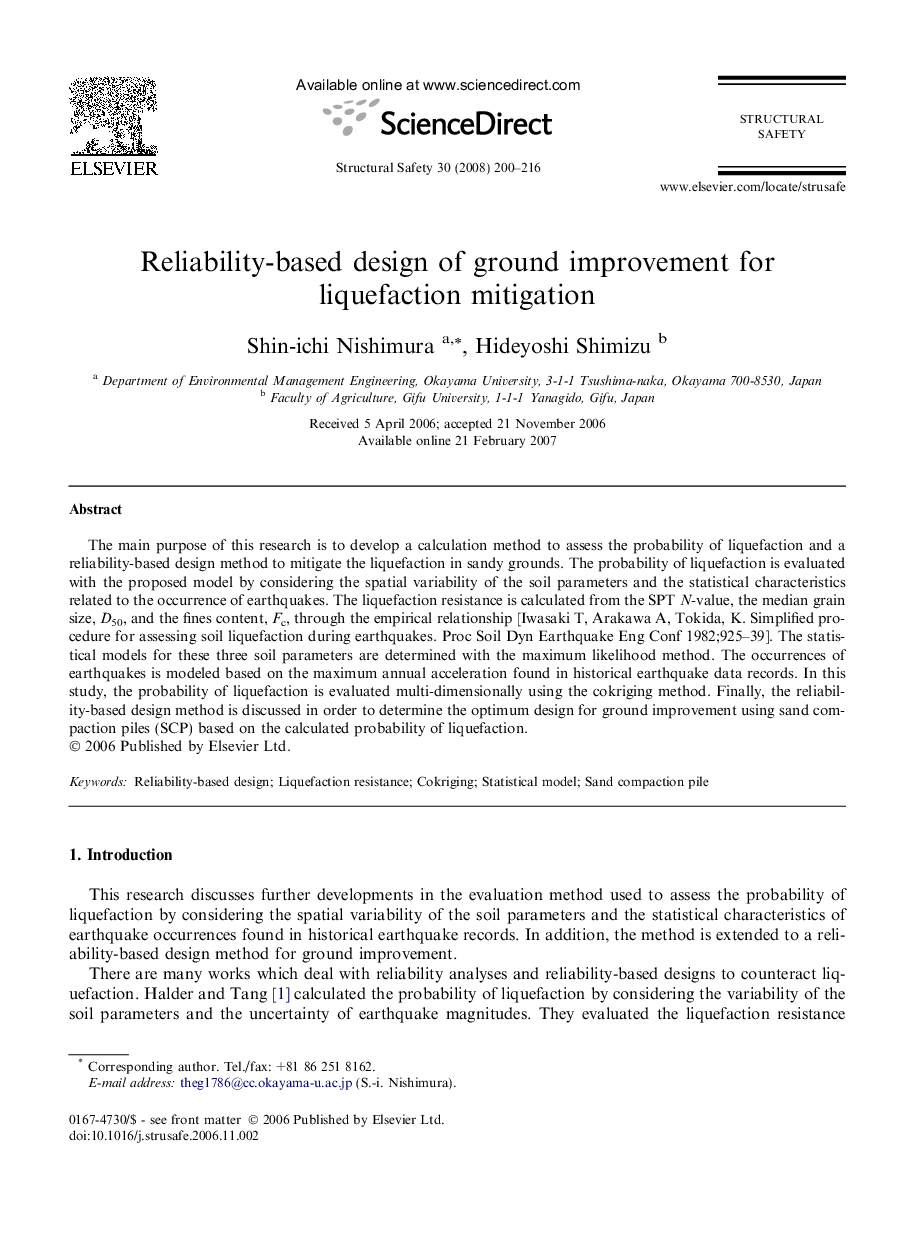| Article ID | Journal | Published Year | Pages | File Type |
|---|---|---|---|---|
| 307792 | Structural Safety | 2008 | 17 Pages |
The main purpose of this research is to develop a calculation method to assess the probability of liquefaction and a reliability-based design method to mitigate the liquefaction in sandy grounds. The probability of liquefaction is evaluated with the proposed model by considering the spatial variability of the soil parameters and the statistical characteristics related to the occurrence of earthquakes. The liquefaction resistance is calculated from the SPT N-value, the median grain size, D50, and the fines content, Fc, through the empirical relationship [Iwasaki T, Arakawa A, Tokida, K. Simplified procedure for assessing soil liquefaction during earthquakes. Proc Soil Dyn Earthquake Eng Conf 1982;925–39]. The statistical models for these three soil parameters are determined with the maximum likelihood method. The occurrences of earthquakes is modeled based on the maximum annual acceleration found in historical earthquake data records. In this study, the probability of liquefaction is evaluated multi-dimensionally using the cokriging method. Finally, the reliability-based design method is discussed in order to determine the optimum design for ground improvement using sand compaction piles (SCP) based on the calculated probability of liquefaction.
